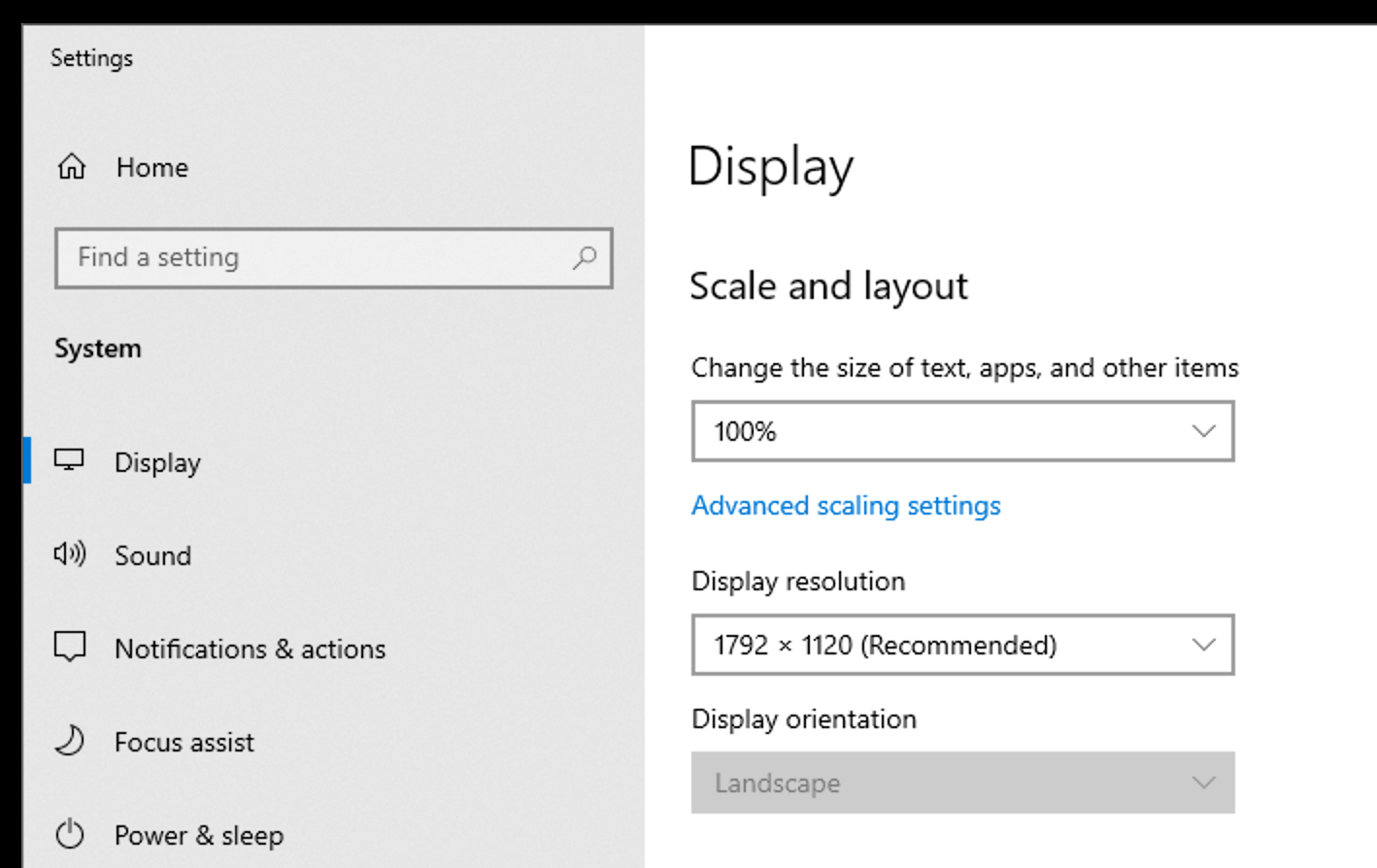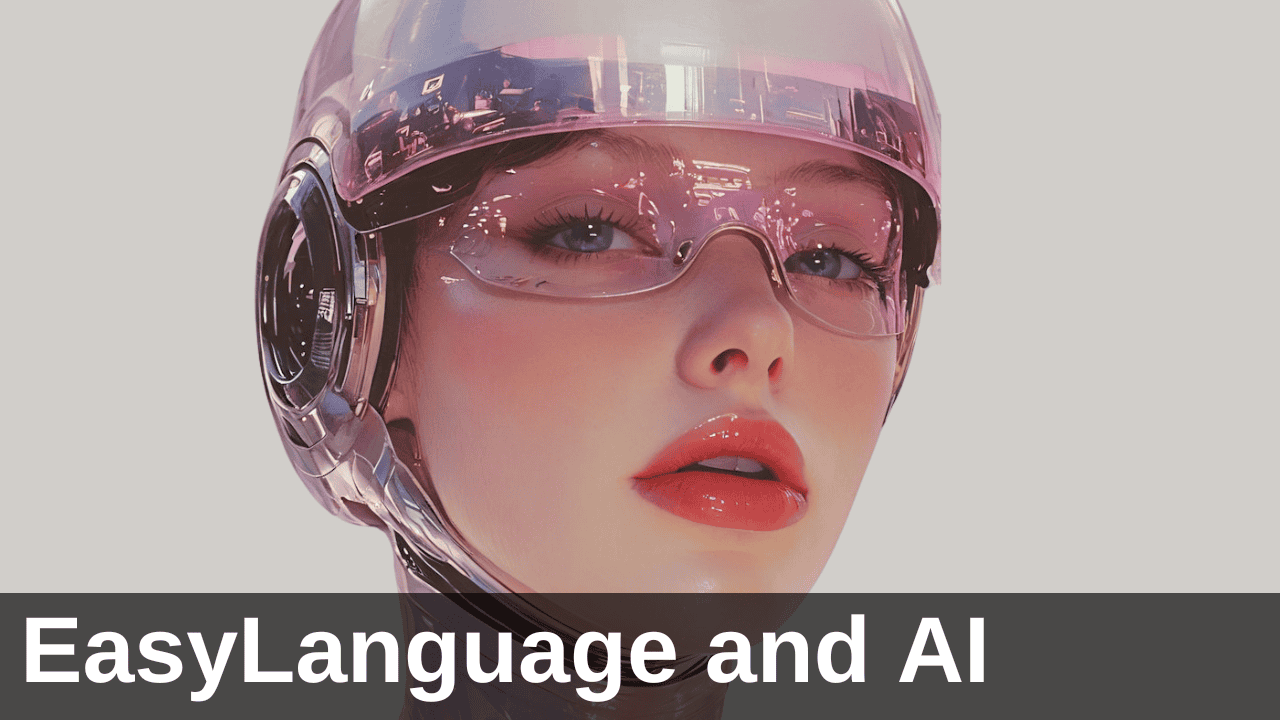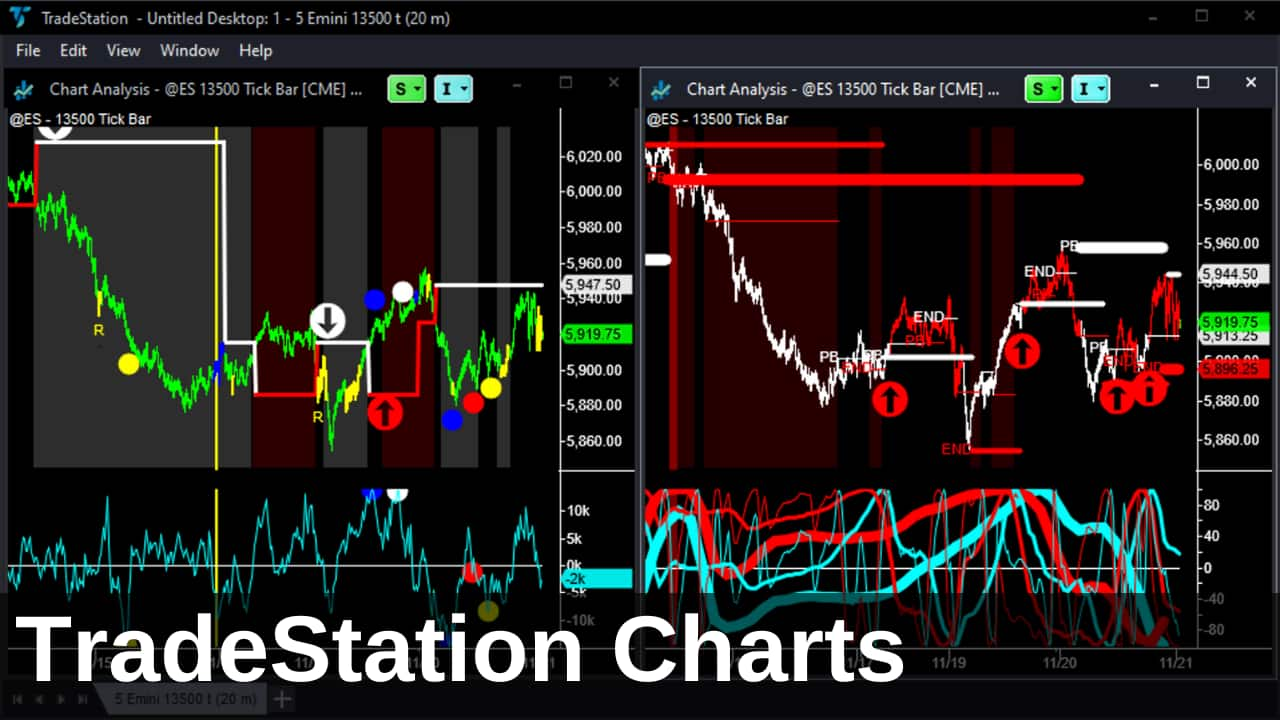If you’re looking to run TradeStation on a Mac, you’ve come to the right place. I’ve been using TradeStation on a Mac since 2010 – the best tech decision I ever made!
But it hasn’t all been plain sailing – Apple hardware isn’t perfect, their ‘Retina’ displays require special settings, and running TradeStation on a PC is definitely more expensive. This guide covers everything you need to know about TradeStation for Mac users, including installation tips, pros and cons, and how to optimize your settings for best performance.
Table of Contents
Use the links above to jump to the TradeStation for Mac topics that interest you.
Trading Software for Mac
None of the major charting platforms has been written for or ported to the Mac OS. TradeStation, NinjaTrader, MultiCharts, eSignal, Metastock and MetaTrader were all developed for the Windows operating system. Sadly, no significant charting platform has ever been written for Mac users.
Having said that, though, apps are generally moving to the cloud. This means all you need is an Internet browser, like Chrome, to run this new generation of cloud-based software. Then, you can use either a PC or a Mac to run your browser, and you’re good to go.
I found your site when my Dell crashed last year and I was searching for info on running TradeStation on a Mac. Without your generous guidance I would never have made the switch to a MacBook Pro.
Joe Russo, Elliott Wave Technology
The leader in this field of cloud-based charting platforms is TradingView, developed by the makers of MultiCharts. TradingView has been a huge success, but it is still not ready to replace TradeStation or NinjaTrader. Some technical issues need to be sorted (e.g. configurable tick charts are not yet available, charts can change when refreshed, etc.), and I’m sure these technical issues will be resolved in time.
So, in the meantime, the best way to run one of the leading charting platforms on a Mac is to use “emulation” software. Explained below …
TradeStation for Mac Users
Emulation software is very clever and allows you to run the Windows operating system simultaneously with the Mac operating system. So you install the emulation software on your Mac, then install Windows on the emulation software, and then install TradeStation in Windows.
It sounds very complicated, but it’s not – it’s seamless, rock-solid and fast.
Just a short note of gratitude regarding your idea of Mac/Parallels/TradeStation. What a fantastic concept. I just purchased a MacBook and Parallels. Downloaded TradeStation and it works like a charm. It’s faster than my desktop, probably due to the Mac SS disc drive. So again, thanks.
Rick W.
One of the best emulation software options is Parallels Desktop for Mac. It’s constantly being updated (it’s now on Version 19) and works very well with Windows 11. And in the latest versions, you don’t need to download a Windows OS installer – it’s all built into Parallels. All you need is a (paid) product key from Microsoft to activate the OS.
Parallels Desktop for Chromebooks (October 2020)
Parallels is now available for Chromebooks! So, potentially, you’ll be able to run TradeStation on a Chromebook. You’ll need a higher spec Chromebook – Intel Core i5 or Core i7 processors and 8GB of RAM for devices with a fan or 16GB of RAM for fan-less models. But this is great news, and I intend to test it ASAP. More information here.
Since I travel most of the year, a desktop Mac is not really an option. I use a MacBook Pro laptop instead. A few years ago, I loved the 17-inch screen version, but ever since Apple discontinued it, I’ve had to settle for 15-inch and 16-inch displays. I currently use a MacBook Pro with an M3 Max processor, 64GB of RAM and a 16-inch display.
The advice below about installing Parallels and TradeStation should work equally for laptop or desktop Apple Mac users and users of NinjaTrader, MultiCharts, eSignal, MT5, etc.
The Pros of TradeStation on a Mac
So here are the Pros I see in running TradeStation on a Mac:
- It works – no crashes, re-starts, or blue screens of death.
- Real-time charts update quickly; indicators and system code are fast.
- Multiple tick bar charts, open simultaneously, are not a problem.
- There is no fan noise, and it is cool (especially since moving to the M3 Max chip configuration).
And then there are the usual Pros of using an Apple Mac:
- It just works – easy OS, installing/uninstalling applications, etc.
- Beautifully engineered hardware, no joints, no nooks and crannies to get dirty.
- Very quick start-up (only bettered by my Chromebook, a Pixelbook Go).
- Seamless integration with iPhone, iPad, Apple Watch, etc.
Yes, PCs have certainly come a long way since my horrible experiences with Dells in 2009 and 2010 and the awful Windows 8.1. But Apple’s superior hardware engineering has resulted in laptops that almost run Windows-native software (like TradeStation) better and faster than on a Windows machine!
The Cons of TradeStation on a Mac
OK. Enough of the Apple-fanboy-enthusiasm. There have to be some Cons, right?
Well, yes. But rather than seeing these as Cons of running TradeStation on a Mac, I view them as adjustments I’ve had to make, moving from a PC to a Mac. So here’s my list:
- A different keyboard layout means relearning or reassigning hotkeys. I totally rethought my hotkey settings in TradeStation, but I also had to learn all the Mac-specific commands.
- The ‘Finder’ for managing documents and files is not as easy as Windows – at least at first glance. Yes, there are some nice graphic features like ‘Cover Flow’, but I’m into speed and hotkeys. ‘Spotlight’ (Command+Space on the Mac) is a much faster way of accessing documents, files, applications, the web, etc.
- Apple-native applications need to be found, and functionality needs to be re-learned. This takes time. Don’t underestimate the time you’ve invested in becoming proficient in running programs like Word, Excel, etc. The Mac versions are different – in some cases, very different. In my case, I moved 100% to the Google Docs suite of cloud-based applications.
- Apple’s ‘Retina’ (high-definition) display resolution on all its hardware is wasted on TradeStation. “TradeStation is hard-mapped and does not scale like a normal graphics program”. This means that if you set your display to the ‘Retina’ definition with TradeStation, the lines (text characters, all graphic elements, etc.) will just be thinner – not any higher definition. Special display settings are required.
This book (recommended by Scott D.) was invaluable when I switched from a PC to a Mac: Switching to the Mac – The Missing Manual by David Pogue.
Apple Macs Are Not Perfect
I used to think that Apple Mac hardware was infinitely superior to PCs. But over the years, I’ve had my fair share of bad experiences: a corrupted hard drive in 2011, a failed MBP processor in 2012, a motherboard failed 3 times in 2018 and butterfly keyboard problems in 2019.
None of this has put me off Apple Macs, but it has made me ultra-conscious of having a good backup plan.
TradeStation System Requirements
Here are the system requirements that TradeStation currently recommends (standard to power user, June 2024):
- 8-12 GB RAM
- 3 GHz quad-core processor
- SSD hard drive with 1 GB free space
- 1680×1050 pixels or 1920×1200 pixels display
- 32-bit graphics card, 512 MB for dual monitors or 1 GB for multiple monitors
- Windows 10 64-bit
My current Mac is a 2024 16-inch MacBook Pro that has the following specs:
- 64 GB RAM, with 32 GB allocated to Parallels
- Apple Silicon M3 Max chip with 16 cores and 8 processors allocated to Parallels
- SSD hard drive with 1 TB, 29 GB used by Windows OS and apps
- 3456×2234 pixels ‘Retina’ display
- 40-core GPU is part of the M3 Max chipset
As you can see, I like high-spec hardware. This setup is total overkill and easily copes with TradeStation, running multiple tick charts in real-time and opening a couple of dozen tick charts simultaneously in the after-hours. Remember, tick charts are the most processor-intensive chart type – and my default – so I need a machine that can cope with these without ever slowing or crashing. The extra RAM really helps in this regard.
How to Install TradeStation on a Mac
- Backup your TradeStation indicators, workspaces and settings (File > Backup/Restore TradeStation > Backup TradeStation > Etc.)
- Copy this backup file, plus any purchased DLLs that live in the TradeStation Program folder, to your Mac
- Purchase a Parallels Desktop Pro subscription (current version 19, June 2024) and install Parallels/Windows on your Mac
- Purchase a Microsoft Windows 11 subscription, open Parallels/Windows and input your product key using Settings
- Start the Microsoft Edge browser from within Parallels/Windows
- Log into your account at TradeStation.com and download the latest version of TradeStation (Client Login > Login > Download TradeStation Platform > Etc.)
- Install TradeStation and then import your TradeStation backup file (File > Backup/Restore TradeStation > Restore TradeStation Archive > Etc.)
- Move any purchased DLLs back into the TradeStation Program folder
- Adjust the display settings in Parallels and Windows (Parallels in menu bar > View > Enter Coherence, then View > Retina Resolution > Scaled, then Windows Settings > System > Display > 100% and 1728 x 1079 > Re-start Windows for display settings to take effect)
- Stop TradeStation from going to sleep (Parallels in menu bar > Configure > Options > Startup & Shutdown > Untick ‘Pause Windows after’)
- Stop your wifi connection from going to sleep (Legay setting: Windows Settings > Search for Device Manager > Click Network Adapters drop-down arrow > Right click on Connection > Select Properties > Under Power Management tab untick ‘Allow the computer to turn off this device to save power’ > OK)
- Re-assign your hotkeys, see below (TradeStation > View > Short Cuts > Hot Keys > Etc.)
Lastly, I’d suggest installing an anti-virus/anti-spyware program in your Windows OS. My favourite is AVG because it’s lightweight, fast and pretty cheap.
Parallels vs Boot Camp vs VMware Fusion?
Boot Camp was a free utility that came with the Apple Mac OS. It allowed you to install Windows on your Mac. But it came with one big disadvantage – you had to reboot your computer to switch to Windows and run TradeStation. You couldn’t run the Mac OS and Mac apps simultaneously with Windows, TradeStation or other Windows apps.
However, when Apple transitioned from Intel to their own chips, Apple Silicon, they decided not to continue developing Boot Camp for the M-series of Apple processors. So Boot Camp is no longer an option with running TradeStation for Mac.
VMware Fusion is also another possible option. But when I did my original research, the reviews were not as favorable as they were for Parallels. However, I have heard back from VMware users and they appear to be quite happy with their tech choice.
Optimizing TradeStation for Mac: Retina Display Settings
As mentioned above, TradeStation is “old school” and the way it renders a chart does not allow it to take advantage of high-definition or ‘Retina’ displays. This might change in the future, but for now, it’s the biggest drawback to using TradeStation for Mac. It looks OK, but it doesn’t look great.
Normally what a program does in ‘Retina’ definition mode is draw the line (text character, etc.) thicker and with 4 times the number of pixels, so it appears smoother. Remember 4 times because ‘Retina’ is 2 times the pixel density vertically and horizontally. TradeStation doesn’t take advantage of this higher pixel density.
Yes, you can adjust all your charts to have thicker lines and larger fonts. But the drop down menus, indicator inputs, title bars, etc. will all appear in a small font – and there’s no way to control these elements. The result is a graphic mess. And the only solution is to turn off “Retina display” in Parallels.
The step-by-step instructions above include the display settings that work, but a few screenshots might help clarify.


Optimizing TradeStation for Mac: Hotkey Settings
The Mac keyboard layout forced me to re-think my hotkeys. Your settings can be reached by going View > Hot Keys. Here’s what I’m currently using:
- File > Close Workspace = Ctrl+W
- File > New TradingApp Window = Ctrl+N
- File > Next Workspace = Ctrl+Right
- File > Open Workspace = Ctrl+O
- File > Previous Workspace = Ctrl+Left
- File > Save Workspace = Ctrl+S
- Pointers > Window Tracking =
- Pointers > Workspace Tracking = ]
- Tools > Scroll to the Beginning = Ctrl+Up
- Tools > Scroll to the End = Ctrl+Down
CleanMyMac X
Since August 2018 I’ve been using the CleanMyMac utility. This great little application keeps my Mac running smoothly. It gets rid of OS bloat, removes apps completely, checks for viruses and malware and runs maintenance scripts to keep my Mac fast. Highly recommended.
Summary
Using TradeStation on a Mac is not only possible but also highly efficient. This article should have convinced you that:
- TradeStation works well on a Mac. Not only is it possible to run TradeStation on a Mac but it’s fast, stable and easy. I’d rate my experience of running TradeStation on a Mac as 9 out of 10. The only issues are dealing with the ‘Retina’ display resolution.
- Parallels is the best emulation software solution. The secret is to use Parallels Desktop software to run the Windows operating system simultaneously with the Mac operating system. With Boot Camp no longer supported, this really is your only option.
- Performance is solid. Boot-up times and real-time chart refresh rates are fast and no worse than on a Windows operating system. And opening a couple of dozen tick charts is no problem with a high-spec RAM machine.
- But adjusting to a Mac takes time. You must re-learn and re-assign hotkey settings in TradeStation to make allowances for the different Mac keyboard layouts. Plus, you’ll have to find and adjust to all the Mac-native software, like Word, Excel, etc.
- And you might want to consider a 27″ display. Even the 16″ MacBook Pro screen is a little cramped. I’d get a 27″ display or dual-screen monitor setup if I could. As I get older, I notice my eyesight deteriorating – and I think a larger display would definitely help.
Thank you to all the Emini-Watch followers who contributed suggestions to this TradeStation for Mac article.





